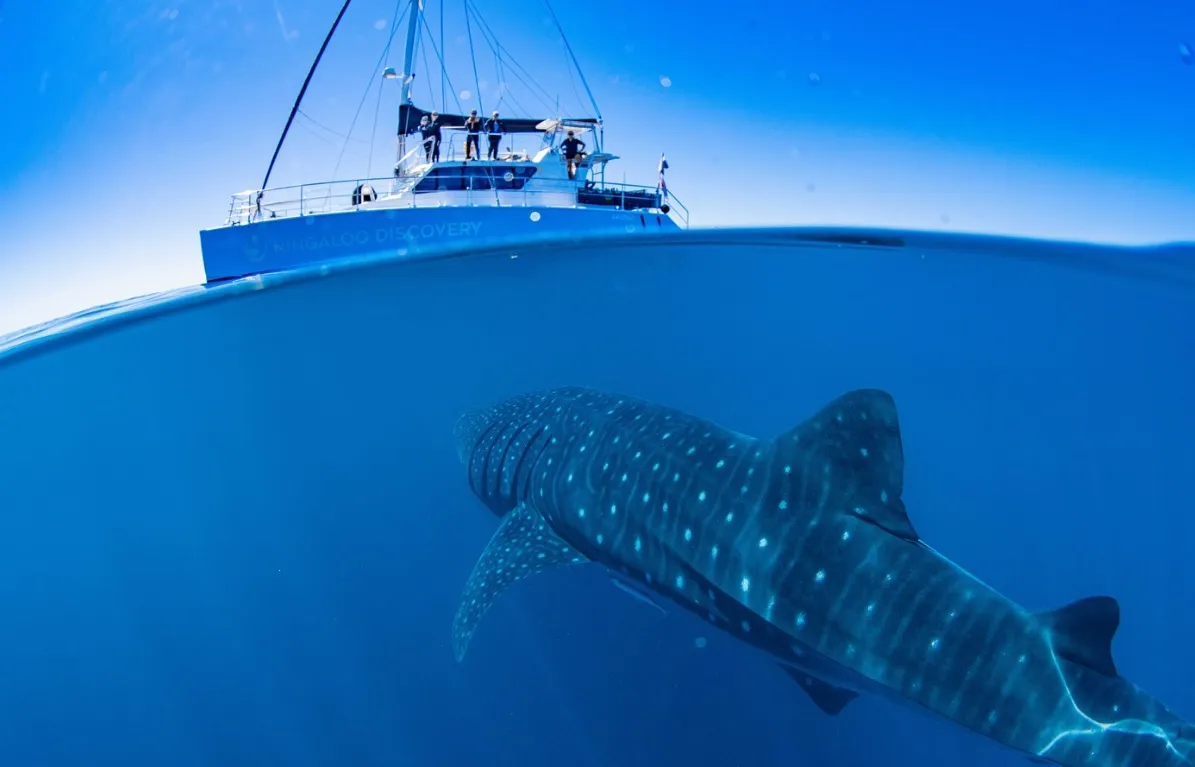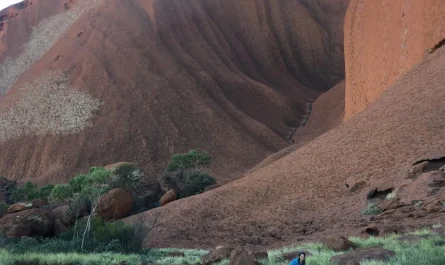Swimming with whale sharks at Ningaloo is an extraordinary and rare experience which has the ability to define one’s lifetime among the world’s cleanest seas. In this all-inclusive guide, we will try to cover all the aspects one needs to know about Ningaloo reef, whale sharks, and how to optimize one’s whale shark swim activity. We’ve got this as well, such as best visiting times and what to bring, safety recommendations and other tips for maximum enjoyment of the visit.
Importance and Location of Ningaloo Reef
A coral reef system which is situated on the western Australian coast and called the Ningaloo reef is among the top 10 best and known extending reefs across the continents. Different from most of the offshore reefs, Ningaloo Reef is situated very near to the coastline and therefore can be accessed easily by people. This amazing reef extends for more than two hundred and sixty kilometers and is famous for the enormous diversity of marine life and fascinating coral reefs.
Highlighting the significance of the reef is its recognition as a UNESCO World Heritage Site, an indication of its high biodiversity and ecological value. The Ningaloo Reef has more than 500 fish species, 300 species of corals and even some sea creatures. The geographical positioning of the reef and the dazzling turquoise waters encourage the growth of enormous whale sharks, the largest known fish to swim. Whale shark season spans the months of March and July. This period attracts many nature enthusiasts all around the world since it is the whale shark tour period in most parts of the world.
The biggest and friendliest fish is the whale shark
One of the largest species of fish is the whale shark (Rhincodon typus), boasting both gentleness and arrogantly large size. Like many rockfish, this species has no spine or bones and is the most massive species of fish in the oceans – ranging from 12 m (40 ft) long and approximate weight of 20 ton. The filter feeding technique of whale sharks gears them towards feeding on small fishes and plankton by taking in large gulps of water through their gills.
These graceful animals have either white location markings or stripe markings on the dark grey skin, and the difficult thing about it is that every individual has good distinguishing features. These patterns have been used in migration studies to assess the movements of whale sharks and other marine life. It is also common for whale sharks to swim slowly and surface feed in certain periods of time, which gives one a very exciting experience of swimming with them.
Swim with Whale Sharks in Ningaloo
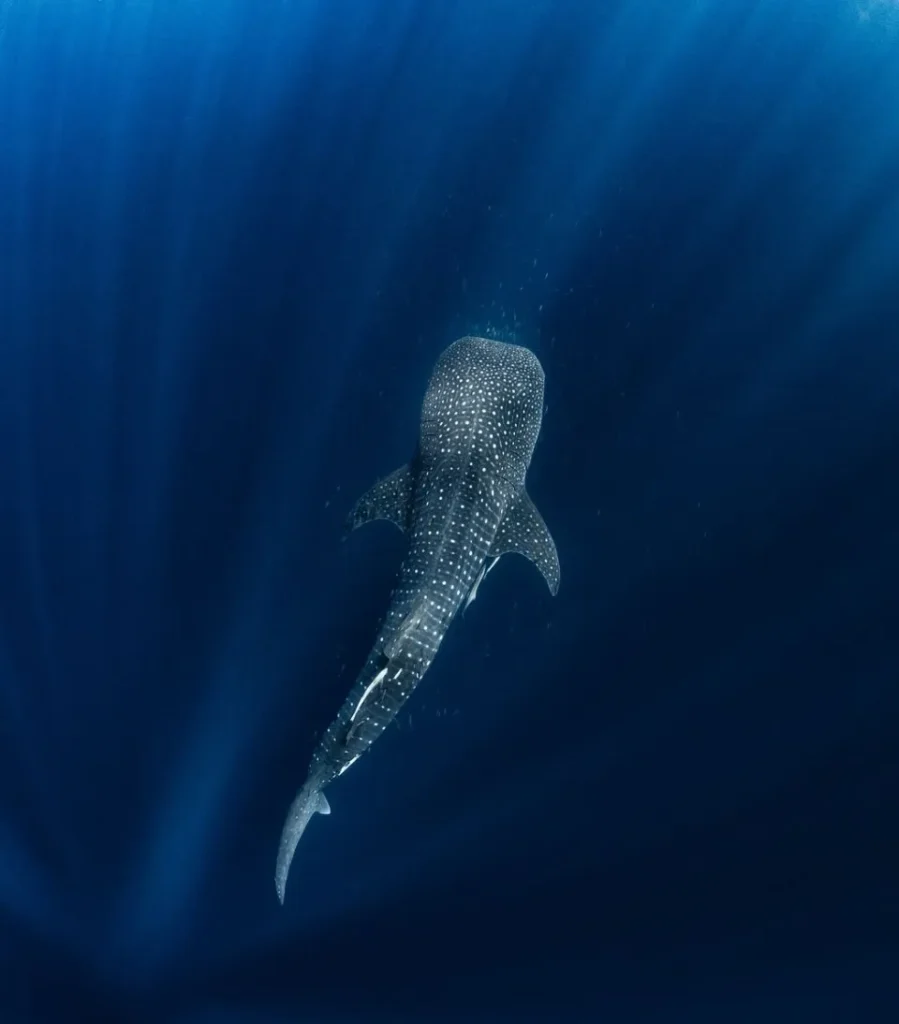
Whale shark consists of two words, that is, whale and shark, for this reason; many people are kept wondering when the best time to swim with this sea creature would be.
The best period to combine the whale sharks with swimming serves to be the period between March and July for Ningaloo whale sharks. This is the best time between April and August when the whales can actually be seen actively swimming and swimming activities increase within the vicinity without dispersing too far. April to June is regarded as the whale shark waiting in line period with close to the highest hopes of being able to see the beautiful marvel.
There are spotter aircraft that are used for the purpose of finding whale sharks in the remote areas of Ningaloo Reef, thus increasing the chances of successful Ningaloo Whale shark tours. Thanks to the presence of these planes, the time spent with the whale sharks by the guests will be beneficial and interactions will be with the best bet possible. To snag an unforgettable whale shark adventure, the combination of the most ideal time, as well as the right advanced spotting mechanisms will make all the difference.
Planning Your Trip
What to Take with You
If you are going for a swim with a whale shark, here is how the packing should be done in terms of equipment and necessary items. Here’s a checklist of items to bring:
- Snorkelling Gear: Snorkelling high quality supplied practicing snorkel with a mask and fins are a must have. Though snorkelling equipment is given by most tour operators, it is better to carry your own for ease and appropriateness.
- Sun Protection: This protection is necessary given the hot sun and other weather conditions – sunscreen, a broad rimmed hat, and even a rash guard.
- Comfortable Swimwear: Only a swimming costume or water temperature appropriate wetsuit is recommended.
- Underwater Camera: Get an underwater camera or a Go Pro to take pictures of your whale shark activities.
- Disposable Water Bottle: Drink plenty of water throughout the course of all activities.
- Towels and Change of Clothes: After the swim.
Itinerary

Such a planned tour of swimming with whale sharks provides in full a standard one and adds a fair bit of measure of a breathtaking adventure to it:
- Morning Snorkel: The activities of the day start with diving into the calm, blue waters of Ningaloo Reef after a hearty breakfast. This period is dedicated to taking a swim in the spectacular coral reefs that are filled with colorful decorations. From little colourful fishes found on the reefs to some strange sea creatures that lurk within the crevices of corals, there’s so much that can be found. It’s a great stress reliever and getting friendly with the waters before the day’s principle activity.
- Whale Shark Swim: After the snorkel, feet wet, it gets, icily, more dramatic. Using spotter aircraft, the crew will search for the enormous filter-feeding fish known as whale sharks. Once the been-de-located itinerary plan is set, you wear the wet suit along with your snorkelling gears and get into the waters searching for these great creatures, only to find yourself swimming right next to them. Swimming next to such huge animals is an experience that can never be repeated. You would suck in Aaron’s huge tummy sweeping impressive whale grace in water as it swims around gaping and dancing.
- Lunch: After all, those strenuous activities in the morning, a pleasing and refreshing gourmet lunch will be on offer. Depending on your tour operator, this could be either served onboard a cruise ship providing extensive views of the reef or perhaps at a delightful site as Coral Bay. Lunch is also often provided with possibilities like fresh fishes, salads and several beverages. There may also be choices of afternoon toast or perhaps even late lunch on offer for the late eaters so that they are adequately prepared before the mission.
- Unwinding and Sightseeing: Afternoon hours are meant either for exploring more about the area or relaxing. Snorkeling in the depths of the sea is always an option when one is feeling more adventurous or alternately, lying at the spacious deck of the boat during the hot noon sun. The deck of the boat is spacious enough and has the opportunity to bask in the sun and see the marvelous sights of the reef. Other tours have the option of going to other swimming attractions and even going to different fishing sites for the more adventurous nature seekers.
Snorkelling Devices
When going out for a snorkelling adventure, you have to ensure your snorkelling gear is in perfect shape. You can opt to bring your own snorkelling gear, although most of the tour operators rent out snorkelling gear. This is what you should know:
- Mask: You need to get a mask that is firm on your face but does not cause any pain. It should be able to perform its function well of keeping water out. Such a mask assists in the attainment of clear vision underwater leading to a more pleasant snorkelling experience.
- Snorkel: Get a snorkel that you know is appropriate and will work perfectly. While some snorkels come with features such as a purge valve that can eject water that has come into the snorkel features such plain design cannot exist. Check that the snorkel per se is of the right length and is of a semi-flexible structure ideally for butterfly and freestyle.
- Fins: Fins should be secured on toes and feet to prevent blistering. They have to be pretty snug fitting as well as comfortable enough to let you do your swimming with relative ease. Depending on the kind of swim you will be doing and the condition of water you will be in, there are different fin shapes you will require, so pick wisely.
- Wetsuit: Since the primary aim of the wetsuit is warmth, there is water, then wind outrigger canoeing is encouraged. You want to be sure the wetsuit you wear is suitable for the water temperature. A properly fitting wetsuit will ensure comfort as well as keep you afloat while snorkelling.
- Safety Gear: It is advisable to take the extra step by bringing some extra safety gear such as a wetsuit or a rash guard in case of too much sun exposure or a buoyancy aid in case you are not a good swimmer. In addition to this many operators will conduct a briefing and an equipment checklist to make sure everything is in order prior to departure.
Diving Features

Rather, the usual emphasis of whale shark tours is on snorkelling. However, a few whalewatching companies provide the possibility of diving for advanced level certified persons. Should you wish to dive, check with your tour operator for diving equipment, the necessary qualifications and if these will be availed at a surcharge.
Minimum Age to Swim with Whale Sharks
Unless one is above the age of six, it is unlikely that anyone has any significant exposure to whale shark tours. Good swimming skills and comfort around the water are necessary for children. Tour operators will offer safety information to all participants and as far as swimming for enjoyment is concerned even children will be briefed on the information necessary for the safe swimming.
The Depth of the Water
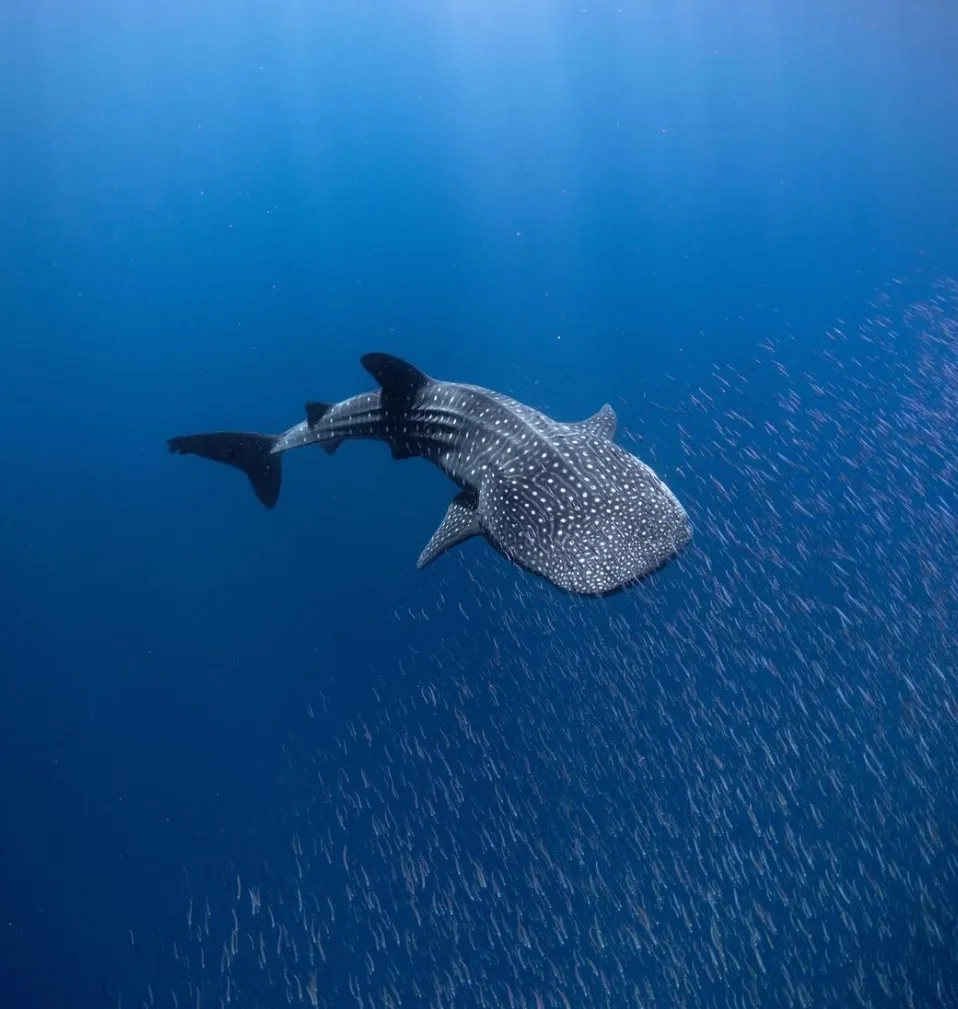
The depth of water in the Ningaloo Reef will also be different whereby some parts will be less deep while other parts may go above seventy feet deep. Usually, the depth is manageable for snorkellers but instructions from the tour leader must be adhered to and snorkelling should only take place in specific areas.
Water temperature
The water temperatures in Ningaloo Reef range between 22°C and 29°C, depending on the season with summer Boxing Day having the warmest temperature within the water. Such warm tropical water is favorable for swimming with whaleng shark and perfect for snorkelling as well. It does stick you but not in a wetsuit while it is hot.
Rules for swimming with whale sharks
All whale shark tours have specific rules that both tourists and the whale sharks themselves are expected to follow so as to keep harmony while swimming with the whale sharks, these include:
- Safe distance: There is a minimum distance that should be maintained from the whale sharks as directed by the tour guide.
- Do not Touch: People should refrain from attempting to touch the whale sharks as they are wild animals and they should not be games.
- Keep a steady and soft approach: Closer to whale sharks, people should keep calm and no unnecessary movements such as standing up should be made.
- Obey the instructions from the Tour Guide: Most importantly, instructions from the experienced crew members, in this instance the water guide, should always be respected.
What Not to Do When Swimming with Whale Sharks
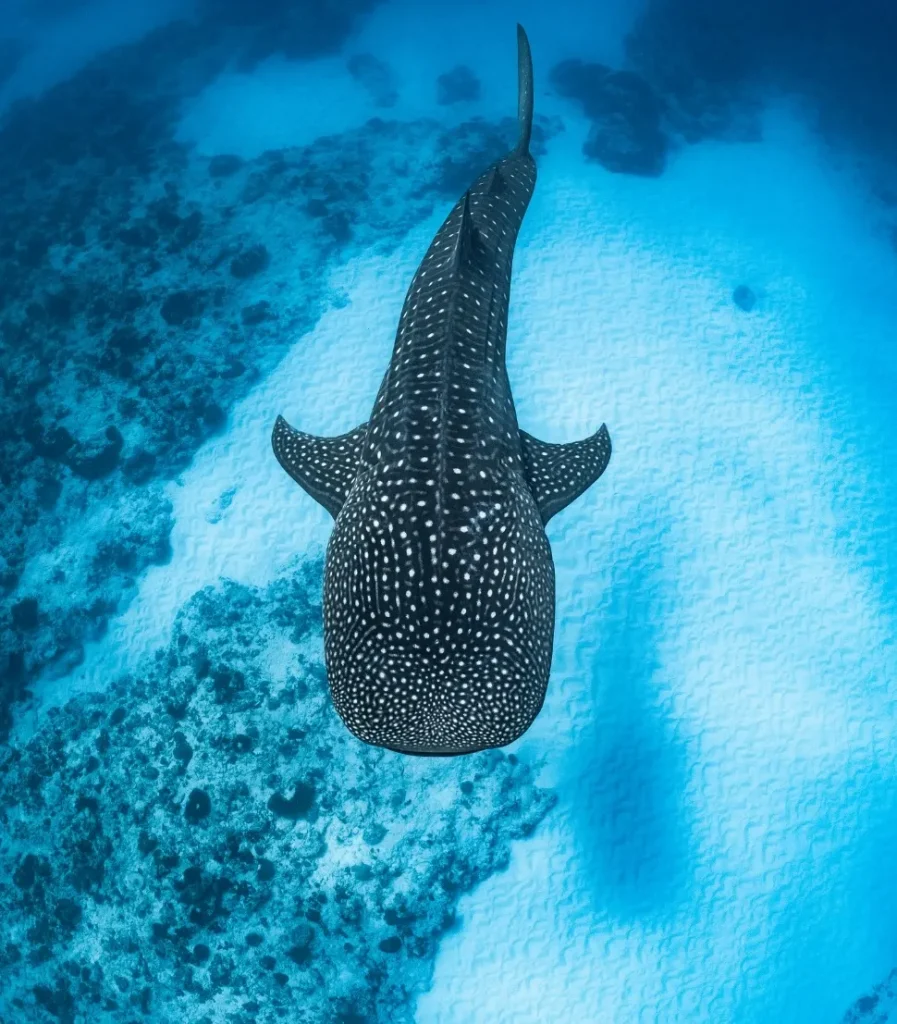
- Do Not Feed Animals: The only effect of feeding animals that are free and roaming is negative, and that is why it should be avoided.
- Avoid Using Flash Cameras: Caution is advised due to the flashing lights this may irritate the whale sharks. Stick to natural light or other settings that do not bother the animals.
- Do Not Swim after the Whale Sharks or During a Group with Whale Sharks: Do not prevent the whale sharks from colonizing the waters or restrict their movement to a certain space.
Things to think about before booking a whale shark tour
One should also think about the following aspects when selecting a whale shark tour to avoid disappointment and ensure a responsible and enjoyable adventure:
- Reputation of the Tour Operating Company: Identify tour operating companies that are known for providing safety and maintaining respect for the environment. Go through reviews and certificates.
- Sustainability and Carbon Neutrality: Move with those who practice carbon neutral and sustainable tourism.
- Proper Safety Briefings and Standby Background of the Leaders: Make sure the tour includes proper safety briefings and proper looking leaders.
- Most Amusing Itinerary: Think of the facilities available such as luxury boats, spacious decks and quality meals.
- Whale Shark Swimming Guarantee: one of the guarantees facilitate, all those who book with it will go swimming with the whale and in case they don’t they get their money back.
Conclusion
Swimming with a whale shark is one of the most incredible experiences you can have in Ningaloo, permitting you to get up close and personal with one of the sea’s most stunning animals. If you plan properly, follow the safety rules and have the right equipment, your whale shark swim will be all that you dreamed of. From taking in the breath taking corals, watching the massive humpback whales in pods and having a succulent gourmet lunch, your visit to the Ningaloo Reef will surely be one of the most joyous moments you could ever bring back years after.
FAQ
What time of year is best for swimming with whale sharks in Ningaloo?
The ideal period for swimming with whale sharks in Ninagloo is between March to July where the peak of this whale shark season is April and June.
What do I need to carry for a whale shark tour?
You need to pack in snorkelling equipment, sun care protection, swim wear, a diction camera, a refillable water container, a bath towel, and you may spare some more clothes.
Is there a minimum age requirement for swimming with whale sharks?
Most of these tours will state that a minimum of six years of age and confidence in swimming is sufficient. Children must be supervised by an adult.
To what depth of water do we swim with whale sharks?
Water depth in the Ningaloo Reef is not uniform and can be quite shallow in some areas or go up to as deep as 20m (65ft).
How should we behave when swimming with whale sharks?
First, keep a good distance between you and the whale sharks, do not come into contact with them, do not panic and obey the guide.
